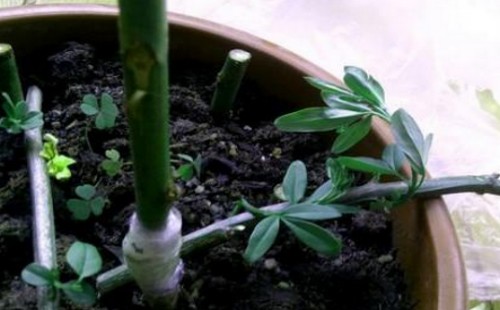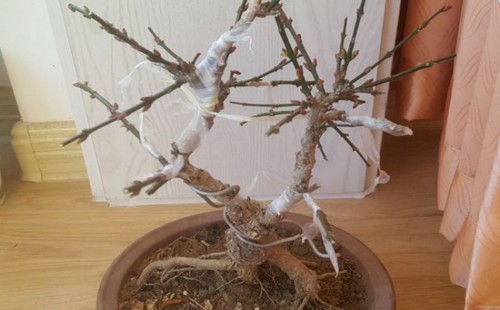The cutting Propagation method of Primrose-- Water cutting method
In the last article pushed by the editor, the editor introduced the time and method of primrose cutting, but it is a way to propagate young plants in soil. Today, the editor will introduce to you another way of cutting propagation-water cutting. So, how to put primroses in water? Next, the editor will share with you the water insertion method of primrose.

In short, the water insertion of primrose is to cut branches from adult plants and insert them into a container containing water. Glass containers are generally used so that you can see the germination and growth of the cuttings in the bottle. During this period, the main thing is to change water frequently, and after rooting and budding, transplanting soil culture can be carried out. This method tends to take root faster and is more suitable for the reproduction of young plants.
1. Water insertion time
As long as the temperature is suitable, the water insertion of primrose can be carried out all the year round. However, if water insertion is carried out in winter, the vase needs to be placed in the sunny place where the indoor light is bright. Summer needs to avoid direct sunlight, so shading measures need to be taken in time. Moreover, when inserting water, the water temperature should be kept between 15-20 ℃, and the indoor temperature should also be close to this temperature. In such an environment, cuttings can often germinate normally, and the success rate is relatively high.
2. Making cuttings
The selection of cuttings requires robust growth, bud eyes are also very full, the length should be pruned to a length of about 8-12 cm, while retaining 2-4 nodes. Generally cut off from the position of about 2 mm below the branch, while retaining a few leaves to avoid excessive evaporation of water, which is also more conducive to promoting rooting.
Third, select the container
Usually we choose a transparent glass container, which can be a glass vase. The caliber of the vase should be slightly larger, it is best to have a bottleneck under the mouth of the original bottle, and the local capacity should also be larger. Sterilize and disinfect before use, and then wash it with clean water.
IV. Water insertion process
Fill the container with clean water, it is recommended to use pure water, keep the depth at 8-10 cm, then tie up the cuttings and insert them into the bottle, the cuttings that are not in the water should be about 4-6 cm, and then put the vase in a semi-shady and ventilated place. During this period, you need to keep the water quality clean, so you need to change the water frequently, and you can also drop a few drops of nutrient solution in the right amount. Usually a change of water can be carried out in 3-5 days. If it goes well, part of the wound will gradually heal in about 3 weeks and take root after 1 month.
V. planting in pots
When the root system of cutting seedlings grows to 3-5 cm long, we need to transplant them in time, either in water or in soil, but they are usually transplanted to potted soil for soil cultivation. But the operation process needs to be careful, as far as possible to avoid damage to the root system, after planting in a semi-shady position management. Usually after more than a week, the normal management can be restored after the plant returns to normal growth.
Time: 2019-06-07 Click:
- Prev

Can primroses be cut? how to cut?
When it comes to the spring season, it is said that spring is the season for sowing, so can primroses reproduce in spring? The answer is yes. And many potted flowers and plants can breed young plants by cutting, so can primrose be cut? Usually
- Next

How to graft primrose bonsai
Primrose can be improved by grafting to make it easier to shape and create bonsai products. The grafting of primrose can use wild Yingchun, Tanchun and other varieties as rootstocks, and the grafting effect is very good. Of course, you can also use salad seedling grafting, usually when it starts to sprout in early spring.
Related
- Fuxing push coffee new agricultural production and marketing class: lack of small-scale processing plants
- Jujube rice field leisure farm deep ploughing Yilan for five years to create a space for organic food and play
- Nongyu Farm-A trial of organic papaya for brave women with advanced technology
- Four points for attention in the prevention and control of diseases and insect pests of edible fungi
- How to add nutrient solution to Edible Fungi
- Is there any good way to control edible fungus mites?
- Open Inoculation Technology of Edible Fungi
- Is there any clever way to use fertilizer for edible fungus in winter?
- What agents are used to kill the pathogens of edible fungi in the mushroom shed?
- Rapid drying of Edible Fungi

